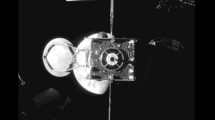
The UAE’s Khalifa University students and faculty have participated in the successful integration of the “MYSAT-1” CubeSat to NanoRacks’ external Cygnus Cubesat deployer, an automated cargo resupply spacecraft destined for the International Space Station (ISS).
MYSAT-1 is the first CubeSat (a miniature satellite used for space research) developed by students of the Khalifa University’s Space Systems and Technology Masters Programme.
MYSAT-1 was completed at the Yahsat Space Lab, an innovative platform for future research in UAE’s space technologies, in collaboration with Khalifa University of Science and Technology and Northrop Grumman Innovation Systems.
Early last year, a space systems and technology concentration unit was launched at Masdar Institute in collaboration with Yahsat and Orbital ATK, a leading American aerospace manufacturing company, in response to the country’s space exploration and sector goals.
Through the programme, Yahsat and Orbital ATK have provided guidance, testing facilities and research assistance to concentration students to enable them to learn and successfully apply fundamental concepts of science and engineering.
As part of the concentration, students completed coursework and conducted research in areas to support the UAE national space programme and space-related industries. Through their studies, the graduates have learned topics ranging from the development, assessment and characterisation of photovoltaic technologies for CubeSats to planning and conducting CubeSat missions. They have also studied the infrastructure needs for space missions, including regulation and policies for satellite networks, and worked on technologies such as advanced antenna arrays for satellite communications and the fabrication and characterization of a three-dimensional printed gyroscope for aerospace applications.
Masdar Institute of Science and Technology and Yahsat also developed the Yahsat Space Laboratory at the Masdar Institute campus, which is being used by students to develop Cubesats. Each Cubesat is being built with different payloads, such as cameras, sensors and scientific equipment. MYSAT-1 is the program’s first satellite design, which began with the first cohort of students from the space concentration in August 2015.














Add Comment